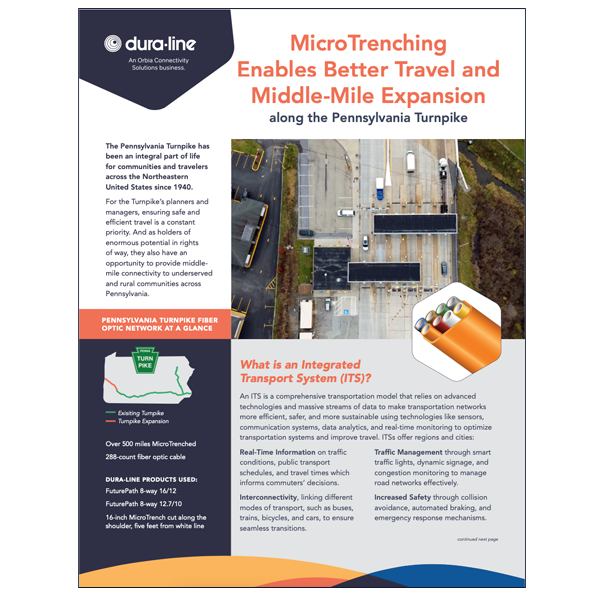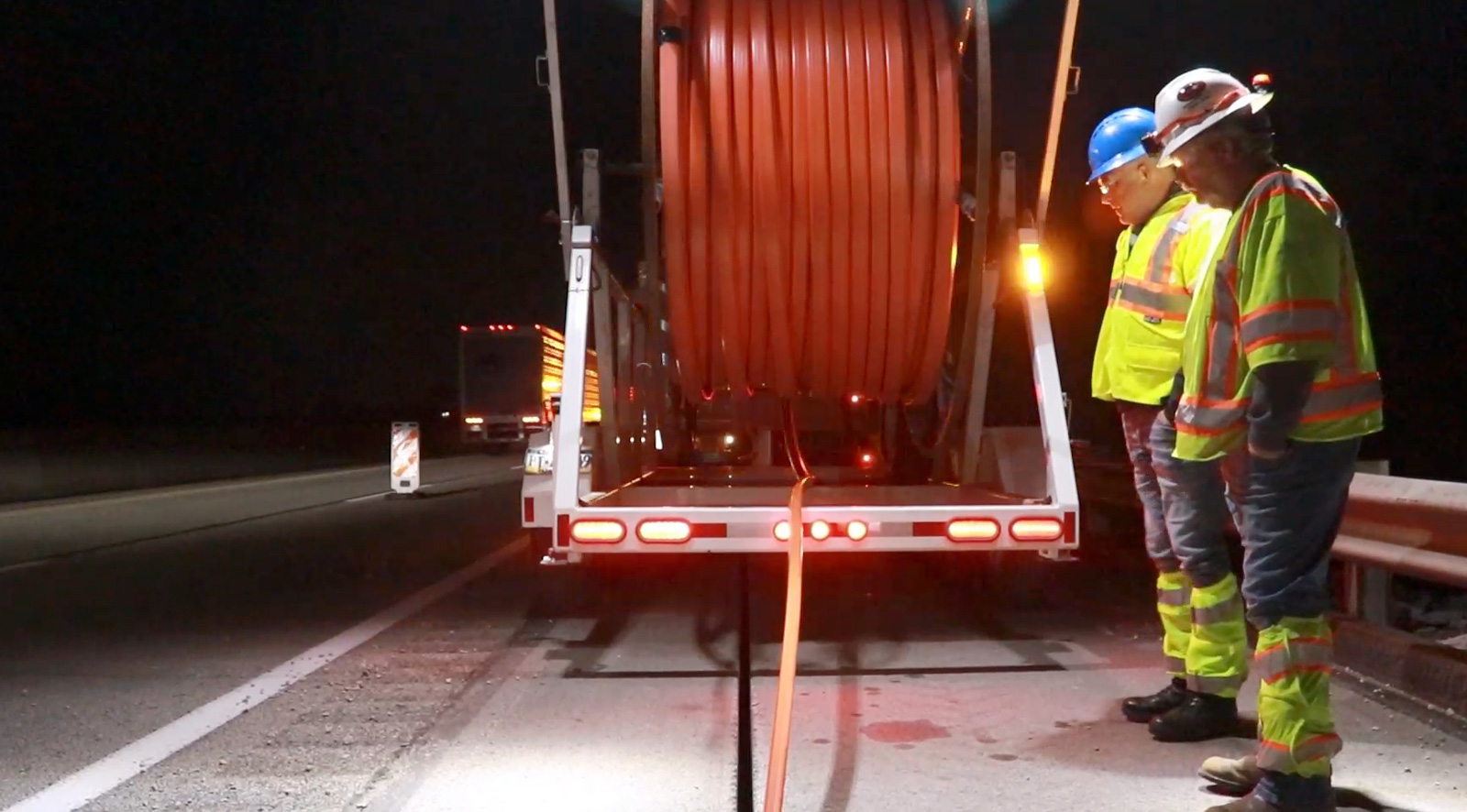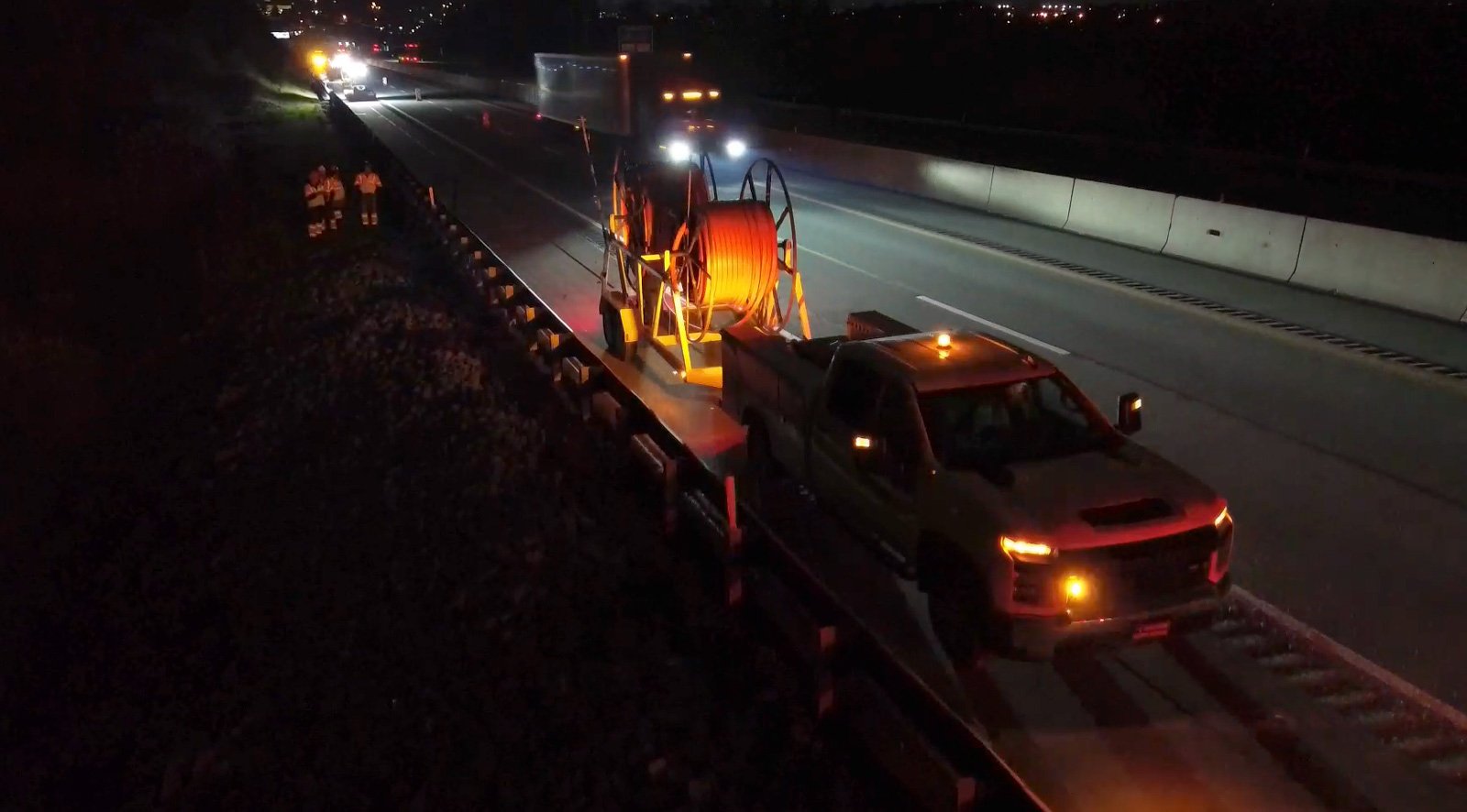The Pennsylvania Turnpike has been an integral part of life for communities and travelers across the Northeastern United States since 1940. For the Turnpike’s planners and managers, ensuring safe and efficient travel is a constant priority, and as holders of enormous potential in rights of way, they also have an opportunity to provide middle mile connectivity to underserved and rural communities across Pennsylvania.
CHALLENGE
Building Safer, More Connected Roadways and Bridging the Digital Divide
Since 2003, the Pennsylvania Turnpike Commission (PTC) has been working to transform the Turnpike into a fully connected Integrated Transport System (ITS) in response to the rapidly increasing need for greater connectivity among their communications. Where in the past, leased lines and microwave towers were adequate, now a 14% average annual bandwidth growth, 24% average annual increase in connected devices, and 212% average annual increase in storage demands meant that the PTC would need its own fiber optic network—both to meet this growing demand and to adopt advancements in transport technology, like all-electric tolling and autonomous vehicles.
A roadside fiber network also presented opportunities for much-needed middle mile connectivity and its ensuing benefits to rural communities between Pennsylvania’s major cities. Along the Turnpike, the broadband revolution has passed by many rural Pennsylvania communities, with the high cost of extending fiber coverage leaving low-density areas severely underserved. The PTC – like many other transportation authorities – were in a position to provide this connectivity through their right of way.
When contractors Thoroughbred Construction and Kokosing Construction were tasked with building out this network, the primary challenges of the installation were clear.
“We're out there every night taking right lane closures, working next to live traffic, which poses a lot of challenges getting people out on the roadway, and then everything we do has to finish that night and get off the roadway,” Kokosing Project Manager Mitchell Radigan shares.
While some of the network deployed fiber aerially, over 500 miles will be placed inside 8-way FuturePath from Dura-Line, all in a 16-inch MicroTrench with 13 inches of reinstatement. Once complete, the entire network will cover 563 miles, with over 3 million feet (625) miles of Dura-Line conduit installed.
Getting an efficient and low-impact installation method was crucial for a compact space—a shoulder of just 12 feet in width—across a long and large-scale project, all of which would require working at night along a busy roadside. In addition to assembling and training the right team, the choice of installation method could impact the amount of time, money, and safety of all the crews involved.
SOLUTION
A Fast, Efficient Installation Method That Allows For Greater Coverage
PTC chose MicroTrenching and MicroDucts to expand connectivity along the Pennsylvania Turnpike. Unlike traditional trenching methods that often require wide and deep excavations, MicroTrenching involves using a rotary blade to make a narrow cut, which results in less damage to roads, sidewalks, and landscaping, and can provide yields of several hundred meters of fiber laid per day.
MicroTrenching Key Steps
- Sawcutting a narrow, shallow trench in roadways or sidewalks, usually 1-2 inches wide at depths of 20 inches or less
- Laying conduit, backfilling, jetting cable into the conduit inside the trench
- Backfilling the trench with a protective reinstatement material and sealing it
While a key challenge for a project of this scale was logistics, Radigan notes that the biggest advantage that MicroTrenching brought to the process remains its efficiency as an installation method:
“With the restoration happening in the same night, there's not a lot of open holes behind you, so it becomes a very efficient way to progress. In city streets where you want the lowest impact possible, it's a very quick installation method.”
RESULTS
More Ground Covered in Less Time, With Lower Impact, at a Lower Cost
MicroTrenching allowed installers to cover more length of this 563-mile fiber build than traditional trenching methods while still ensuring significant flexibility in the network.
FuturePath 8-way, used in two sizes for the majority of this project, provides a convenient, compact shape for MicroTrenching. Because FuturePath also provides several pathways in the same solution, PTC was able to deploy fiber optic cable and reserve the remaining empty MicroDucts both for their own future use and leasing, which can speed up ROI for the PTC and eliminate a significant barrier to entry for operators to serve the underserved along the Turnpike.
And while adoption continues to grow across the industry, the advantages of MicroTrenching have been proven, not the least of which is cost savings. Compared to traditional open trenching, MicroTrenching can generate on average between 50% to 75% reduction in costs.
Paving the Way for Other Innovative Roadside Networks
Transportation agencies and authorities around the globe are in a unique position as the holders of rights of way. By capitalizing on rights of way through long stretches of landscape and through communities, agencies and authorities can unlock enormous potential to improve and streamline their own communications, as well as deliver connectivity where it can make the biggest positive impact to quality of life.
Installing fiber along planned upgrades or expansions—especially if housed in FuturePath and installed with innovative and low-impact methods like MicroTrenching—enables transportation agencies like PTC to accomplish their short- and medium-term goals while creating space for exciting future possibilities:
- Enable healthier competition and lower costs for customers, because the new middle mile fiber removes a key barrier to entry for competitive internet service providers (ISPs) to serve the underserved in rural and/or remote communities.
- Collaboratively implement Dig Once, as emphasized by federal broadband infrastructure policies, which lead to greater broadband coverage in underserved areas
- Deploy fiber in innovative ways to streamline and expand current capabilities through emerging technologies — like fiber optic sensing and autonomous vehicle readiness — to make traveling even more efficient and safer


Download the case study to learn more about how MicroTrenching allowed for faster communications and tolling upgrades and enabled middle-mile connectivity!
Download the Pennsylvania Project Case Study






